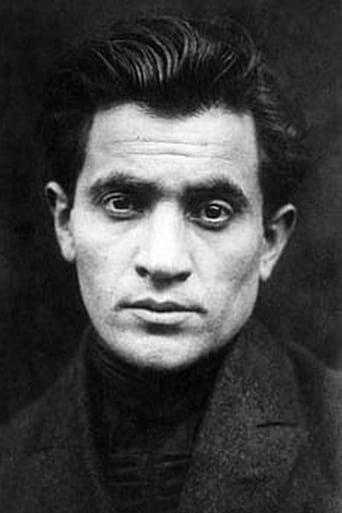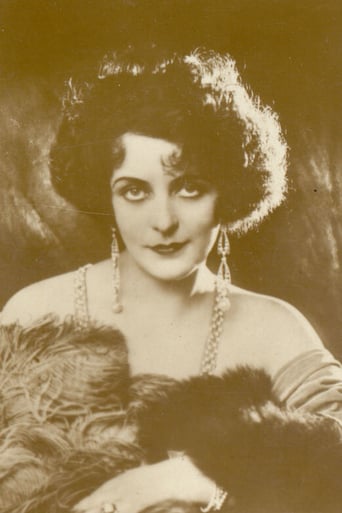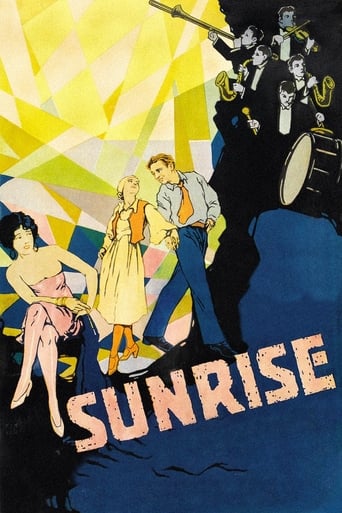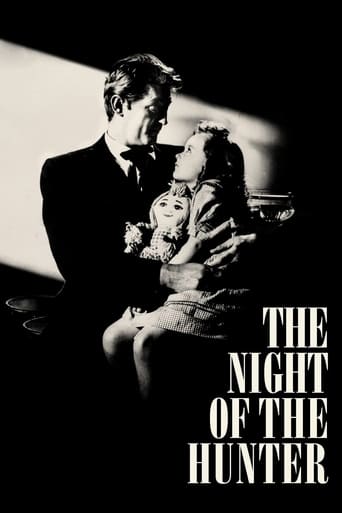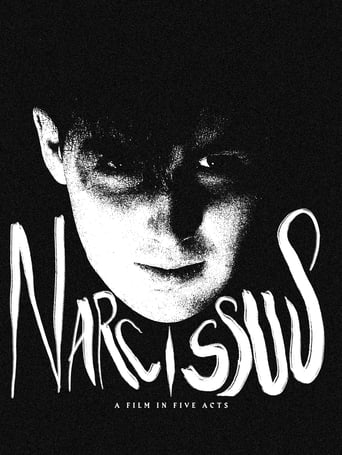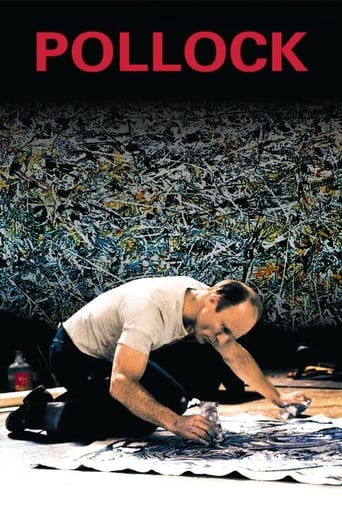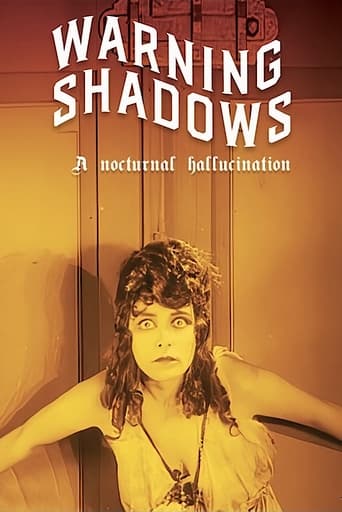
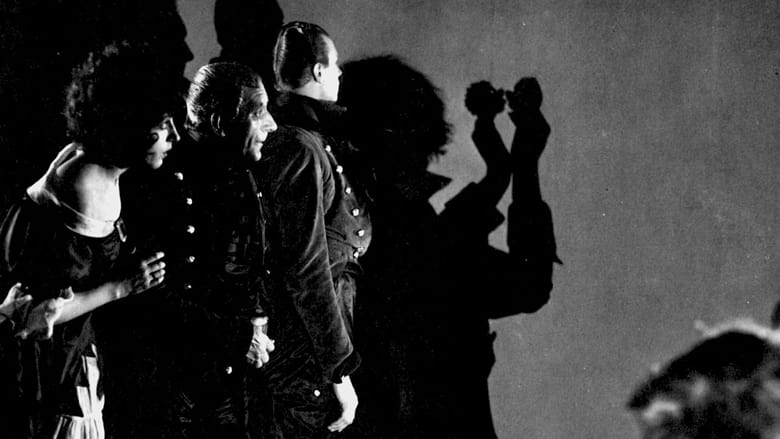
Warning Shadows (1923)
During a dinner given by a wealthy baron and his wife, attended by four of her suitors in a 19th century German manor, a shadow-player rescues the marriage by giving all the guests a vision what might happen tonight if the baron stays jealous and the suitors do not reduce their advances towards his beautiful wife. Or was it a vision?
Watch Trailer
Cast


Similar titles
Reviews
Ruth Weyher (the super-lovely wife), Fritz Kortner (the super-jealous husband), Fritz Rasp (the personal servant), Karl Platen (another servant), Lilli Herder (the maid), Alexander Granach (the strange illusionist), Eugen Rex (servant), Gustav von Wangenheim (the lover), Rudolf Klein-Rogge, Max Gulstorf, Ferdinand von Alten (older admirers).Director: ARTHUR ROBISON. Screenplay: Arthur Robison, Albin Grau, Rudolf Schneider. Photography: Fritz Arno Wagner. Art direction and costume design: Albin Grau. Producers: Willy Seibold and Enrico Dieckmann. PAN Film. German release: 16 October 1923. New York opening at the 55th Street Cinema: 9 August 1927. 85 minutes. (DVD available from Kino. Quality rating: 9 out of ten). COMMENT: A masterpiece of German expressionist cinema or a boring charade? Critics are not evenly divided. Most opt for the first scenario. Me? I stand in the middle. "Warning Shadows" is the sort of film that seems better in one's memory of tinted shadowy highlights than in an actual viewing where larger-than-life acting (particularly the over-the-top, bulging-eyed Kortner) is much less acceptable.
German Expressionism was a style of filmmaking that seemed loaded with potential, especially after the early success of The Cabinet of Caligari. The idea of the movement was that the filmmakers would make the sets reflect the interior state of the characters, which is a neat way to get around the seeming perspective limitation of cinema when compared to literature. In practice, however, Caligari has remained pretty much the only famous film to do this successfully and consistently in spite of the utilization of this technique in very small measures in several films of the period, most famously in those of Murnau and Lang. I was hoping that the relatively obscure Warning Shadows (aka Schatten - Eine nächtliche Halluzination) might be another film that took full advantage of what I see as the great potential of this movement but I was somewhat disappointed to see that it uses it minimally. First of all, in spite of a couple of cues that suggest a good deal of the film isn't quite real or even that it's all the dream of a character, this idea is never fully developed so there really isn't a specific interior state to reflect. Even if you work with the assumption that the film doesn't represent any specific perspective but is meant to look like a dream, the set design is still lacking because it just seems like a staged mockup of a large manor house. In fact, for a film that foregoes dialogue and intertitles altogether, Warning Shadows is surprisingly stagy and the rooms seem artificial in a bad way, especially since it isn't common to see more than one wall at a time here. The plot and its execution is solid but unremarkable. The film is about a very jealous man who has invited four amorous young men to have dinner with him and his coquettish wife. It's obvious where this is headed all along, although things are complicated by the presence of an entertainer who can do amazing things with shadow puppets. He uses these puppets to show what might happen if the young men don't cool their heels around the jealous husband. This is a simple plot that is still somewhat hard to follow because of the lack of dialogue and is further complicated by the languorous pace. On the bright side, the entertainer character seems to be a neat variation on the supernatural trickster archetype. Anyway, the highlight here is still the visuals, especially the warning shadows themselves. There's something inherently creepy about shadows and especially a mysterious person who can manipulate them for reasons of his own and even though he ultimately turns out to be relatively benevolent the film still manages to pull of a few unsettling sequences. Further, there are a couple of scenes in which the characters' behavior is odd in a way that calls dreams to mind, so this isn't just your run of the mill tale of jealousy. I also have to give the film some credit for relying so much on visuals and the last scene is suitably bizarre. Overall, Warning Shadows is a worthwhile watch that doesn't quite live up some of its more famous predecessors.
"Warning Shadows" shouldn't work as well as it does. There are no titles, causing the plot to be confusing if not closely paid attention to; the Expressionistic elements are abundant but also strangely removed in style; the acting is often tongue-in-cheek, and the overall artiness is seemingly self-conscious. However, those same elements also contribute to this film's majesty and originality. There is simply no other film (that I'm aware of, anyway) that approaches the beauty and sheer erotic oddness of this obscure classic. I cannot adequately describe exactly what it is that makes "Warning Shadows" one of my all-time favorite motion pictures, so...just see it. It's available on DVD from our great friends at Kino.
To enjoy this film -- and you can -- accept the fact that the characters take their time in expressing themselves in mostly slow, but sometimes abrupt motions. Give up the idea of "Get on with it!" and accept the slow pace. It's worth it; just let yourself be drawn into a world of shadows, dreams and mesmerism.At a dinner party, a shadow player entertains a count, his flirtatious wife, and four of her admirers. He appears to entrance them into a weird dream in which the suddenly cuckolded husband has the three suitors kill his wife. This is enough of a spoiler, since you could probably guess watching it that something was going to happen to her because of her outlandish flirtations with those fawning over her (or perhaps, as another noted above, she was more in love with herself than with others). Finally, the party goers watch the ending of their dream on a screen in front of them, the curtains close over it, and they wake up. The husband and wife reunite, now deeply in love, seeing the folly of their past ways.What makes the film stand out are (surprise!) the extensive and creative use of shadows, the slightly bizarre story, which definitely cries out for a remake, and some outstanding camera work, even if this is the kind of German Expressionism Mike 'Deiter' Myers used to satirize on the 'Sprockets' segment on 'Saturday Night Live' in the 1990s.We don't get the herky-jerky motions so common in comedies of the teen years, or as seen in the great 'Intolerance' (1916), or the amazing 'Cabinet of Dr. Caligari' (1920), but we see more naturalistic (24 frames?) movement, even if it's all too stagy. It has a good, well fitting score. If you want good, fluid movements, with an interesting story and not very stagy acting, check out 'The Four Horsemen of the Apocalypse' (1921) or any of so many other great films of the twenties.This one is innovative, ground breaking, enjoyable film making. I give it a 7.


